Hello, I’m Michael Zhang, a seasoned travel expert from China with extensive international travel experience. Over the years, I’ve explored the globe, focusing particularly on history, culture, and in-depth travel. I love immersing myself in destinations that offer a rich cultural experience, uncovering hidden gems, and sharing my insights with fellow travelers. In this article, I’ll take you on a journey to explore the Shanghai Astronomy Museum, a fascinating place that merges modern technology with humanity’s quest to explore the cosmos. Whether you’re an astronomy enthusiast or simply curious about the universe, this museum will offer you a truly unforgettable experience.
Summary
Shanghai Astronomy Museum Overview
The Shanghai Astronomy Museum is a remarkable complex consisting of the main “Three-body” architecture—comprising the Circular Sky Window, Inverted Dome, and Planetarium—along with additional structures like the Wangshu Observatory and Xi He Solar Tower. Spanning 58,000 square meters with a total construction area of 38,000 square meters, the museum is built around the theme of “Connecting Humanity and the Universe.” The museum is divided into three main exhibition areas: Home, Cosmos, and Journey, along with three special thematic areas: Chinese Celestial Inquiry, Curious Planet, and Journey to Mars. The museum also features approximately 70 meteorite samples and over 120 sets of cultural relics. With over 300 exhibits, it is equipped with four professional astronomical observation and planetarium systems.
- Address: 380 Lingang Avenue, Pudong New District, Shanghai (Apple Maps/Amap)
- Opening Hours: 9:30 AM – 4:00 PM daily (last entry by 3:00 PM), closed on Mondays.
- Recommended Visit Duration: 2-3 hours
- Best Time to Visit: All year round
- Ticket Price: 30 RMB
- Ticket Purchase: Trip.com Discounts
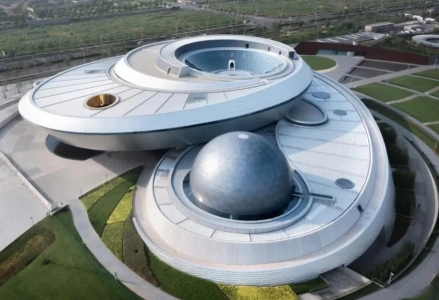
Shanghai Astronomy Museum Floor Layout
The museum’s main exhibition areas are divided into Home, Cosmos, and Journey.
- 1st Floor: The Home exhibition area is the most awe-inspiring section of the museum. It focuses on Earth, the Sun, and other celestial bodies. The Milky Way and Optical Planetarium are located here as well.
- 2nd Floor: The Cosmos and Journey exhibition halls provide a 1:1 recreation of a space station, allowing visitors to experience how astronauts live in space.
- 3rd Floor: The Inverted Dome Platform offers a stunning view from above, where you can walk along the bridge for an immersive experience.
- Basement 1: The restaurant, Curious Planet exhibit, and temporary exhibitions are located here. Previous exhibitions, such as the Dunhuang Exhibition, have been particularly well-received.
Why You Should Visit the Shanghai Astronomy Museum
Unique Architectural Design
The architectural design of the Shanghai Astronomy Museum is inspired by the formal abstraction of orbital motion. It not only reflects astronomical concepts but also tracks the movement of the Sun in the sky, turning the entire building into a massive astronomical instrument that marks the passage of time. This is especially evident around the summer solstice when the interplay of light and shadow on the ground serves as a symbol of seasonal changes. The Circular Sky Window, located at the entrance of the main building, creates a fascinating light spot on the ground as sunlight filters through. As the sun moves across the sky, the light spot shifts, functioning like a sundial and enhancing the museum’s role as a tool that connects humanity with the cosmos.
Rich and Diverse Exhibits
The museum offers a comprehensive exploration of ancient Chinese astronomy. The exhibitions are divided into five main sections: Ritual, Extremes, Observation, Instruments, and Calendar, which delve into the close relationship between ancient Chinese culture and astronomy, the ancient star systems, astronomical observation records, celestial instruments, and the Chinese calendar and time systems. The museum also showcases the world’s most complete astronomical records, unique systems for dividing the sky, and historical calendar systems from various Chinese dynasties. Through models, recreations, artistic installations, and multimedia displays, the museum vividly presents the ancient understanding and applications of the cosmos.
Things to do in the Shanghai Astronomy Museum
Main Attractions
“Home” Exhibition Area
The “Home” exhibition area creates a mysterious and beautiful starry atmosphere through grand scenographic designs. As visitors stroll through space, they deepen their understanding of the solar system and the Milky Way. The exhibition answers questions such as: Do other planets have water? Do they have auroras? Are there volcanoes? Where exactly do we stand in the vast universe?
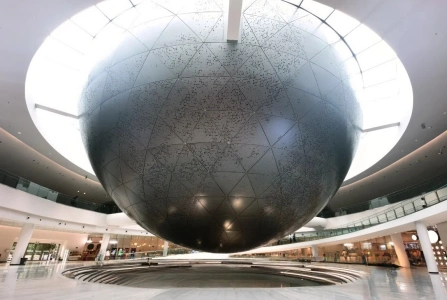
“Cosmos” Exhibition Hall
The “Cosmos” exhibition area consists of five themes: Time and Space, Gravity, Light, Elements, and Life. Each section presents the operational laws of the universe from different perspectives, tackling the most core and cutting-edge concepts in modern astronomy. Here, you will have the opportunity to engage with masterpieces of human astronomical history, exploring the mysteries of the cosmos from multiple angles and disciplines.
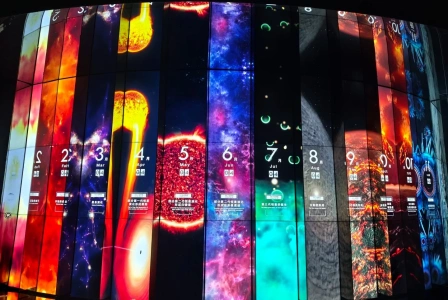
“Journey” Exhibition Hall
The “Journey” exhibition area offers a panoramic display of humanity’s long journey to explore the mysteries of the universe. It spans from ancient human contemplation to the modern astronomical revolution, featuring astronomical observatories, research programs, and satellites from around the world. It also showcases China’s lunar exploration through the Chang’e mission, space station, and Mars exploration programs. This exhibition relies on scientific stories and futuristic ideas to inspire visitors’ understanding of scientific exploration methods and spirit, along with deeper cultural reflections.
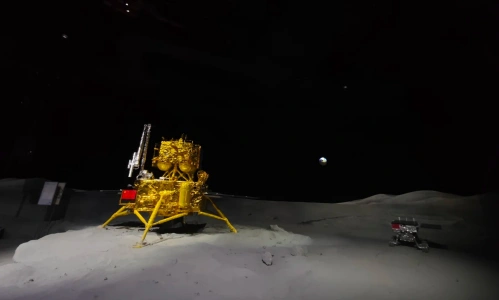
Special Exhibits
In addition to the regular exhibitions, there are special exhibits at the Shanghai Astronomy Museum that require reservations. There are several exhibits to choose from, with “Fly Through the Milky Way” being the most recommended. If you can’t secure a reservation for it, you can try booking the “Journey to Mars” exhibit instead. For families, “Wonder Planet” is a great option.
- Reservation Times: Daily at 9:30 AM and 1:00 PM. Reservations are available twice a day. Each person is allowed to visit only one exhibit per day.
Fly Through the Milky Way
This is the most popular and highly recommended exhibit, though it’s also the hardest to book. The show lasts 8 minutes, and children must be at least 1.1 meters tall to participate. The “Fly Through the Milky Way” theater is a 6K dynamic theater where viewers board the “Light Chaser” spaceship to explore the mysteries of the Milky Way. With thrilling plots and vast space scenes, combined with six degrees of freedom motion platforms and a 6K giant hyperbolic screen, visitors will feel immersed in the vastness of the universe, experiencing the wonders of the Milky Way and the brilliance of its stars.
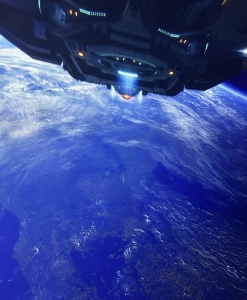
Optical Planetarium
The show lasts 5 minutes and is suitable for all ages. The Optical Planetarium eliminates light interference to restore the sky’s deep black backdrop. The simulated starry sky is projected by a high-precision optical planetarium projector. Accompanied by natural background sound effects, the 2.2-meter-high silhouettes of trees and the large dome’s realistic starry sky create a scene of dusk turning into the birth of the moon. The stars seem within reach. Visitors can observe the sky throughout the year, from different latitudes, along with planets and prominent star clusters and nebulae, without the limitations of time and space.
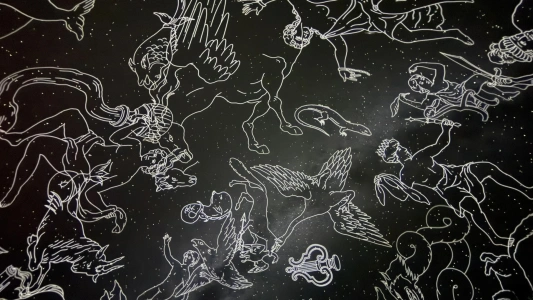
What If Theater
The show lasts 9 minutes. The What If Theater explores what would happen if the basic constants of the universe were slightly altered. Would the universe become dull and lifeless, or would it collapse entirely? In this experience, we witness how a small change in the universe’s fundamental constants could either make it mundane or completely disintegrate, leading us to reflect on how lucky we are to live in such a perfectly balanced universe.

Journey to Mars
The show lasts 30 minutes, and children must be at least 1.5 meters tall to participate. If Fly Through the Milky Way is unavailable, consider booking Journey to Mars. This special exhibit offers a futuristic look at space travel and the development of Mars. Visitors become part of a Mars rescue team and embark on a journey to a Mars base. The realistic scenes include the docking of spacecraft, the process of landing on Mars, and an in-depth look at the Mars base.
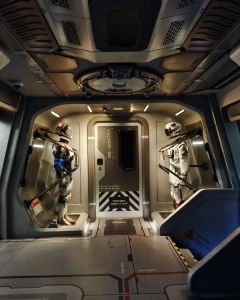
Wonder Planet
The show lasts 45 minutes and is ideal for children aged 3-8. Wonder Planet is a family-friendly exhibit where the story of a little girl named Eva, who loves astronomy, and her alien friend UU is told. They embark on an adventure to exoplanets, starting from Eva’s bedroom, traveling to “Ice Mars” and “Flower King Planet,” and finally attending an “Alien Party” to end their cosmic journey.
- Note: Visitors are required to wear socks to enter the play area. If you don’t have socks, you can purchase them nearby for 12 RMB per pair.
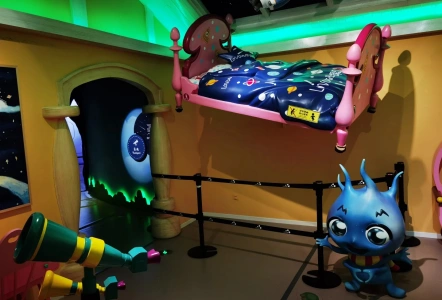
Wangshu Observatory
The experience lasts 20 minutes and is suitable for all ages. The Wangshu Observatory is named after the Chinese mythical goddess Wangshu, who drove the moon. The observatory houses the largest public optical telescope in China—the “Switchable Dual-Focus One-Meter Telescope.” The exhibit explains how telescopes work and provides a chance to see the telescope up close.
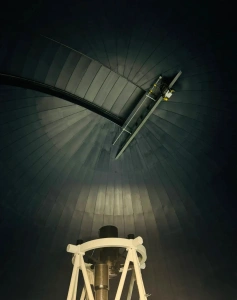
The Xihe Solar Tower
The experience lasts 30 minutes and is suitable for all ages. Visitors can learn about the basic knowledge of the Sun in the exhibition hall on the first floor, understand how solar telescopes work, and enjoy live solar shows.
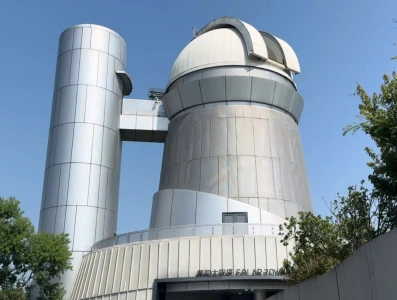
Dome Theater
Sit inside a floating sphere and enjoy a high-definition dome movie. Whether it’s the awe-inspiring scenes of the cosmos or the beautiful music beneath a starry sky, it’s an unforgettable experience.
- Dome Movie Price: 40 RMB per person
- How to Reserve: You must purchase a ticket before reserving the Dome Movie. If you buy tickets through the official WeChat account, you can buy Dome Movie tickets after securing your general entry ticket. For offline purchases, you can buy the movie ticket on-site. Tickets open for sale at 10 AM. After selecting your seat, you’ll have three minutes to complete the payment. The movies are all excellent, and since the showtimes are fixed, it’s best to choose a time that suits your schedule.
- Movie Programs:
- “The Sky”: 20 minutes, starting from the chaotic beginning of the universe, exploring the natural world and the universe.
- “Time Travel”: 25 minutes, covering the life cycle of stars, the Big Bang, black holes, and time distortion caused by gravity.
- “The Invisible Universe”: 25 minutes, focusing on how the universe is constantly changing, yet humans cannot see the whole universe with their naked eyes. Various instruments were invented and developed to explore the unknown universe.
- Recommended Seating: The best viewing experience is from rows 5-7 in the center.
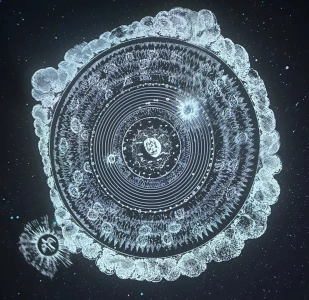
Shanghai Astronomy Museum Ticket Guide
Shanghai Astronomy Museum Ticket Prices
- Adults: 30 RMB
- Children/Students: 15 RMB (for children 6 years old or above, or with a height of 1.3 meters or more; students with a bachelor’s degree or lower. Students must bring their ID cards).
- Seniors: 25 RMB (for seniors aged 60-69).
- Free Admission: Seniors aged 70 or above and children under 6 years old can enter for free. Note: You must bring relevant identification to enter.
- Opening Hours: Daily from 9:30 AM to 4:00 PM (last entry at 3:00 PM). Closed on Mondays.
Ticket Purchase Channels
- Online: You can purchase tickets through the official WeChat account or relevant booking platforms. Reservations open three days in advance, starting at 9:30 AM.
- Ticket Purchase: Trip.com Discounts
- Offline: Tickets can be bought at the on-site ticket counter, but you will need to queue and bring your ID.
Recommended Visit Route for the Shanghai Astronomy Museum
- Entrance: Arrive early to book the “Fly Through the Milky Way” exhibit.
- 1st Floor – “Home” Exhibition Area: As it tends to get crowded, it’s recommended to take photos with the Sun first, and then explore the exhibit in detail.
- 2nd Floor – “Cosmos” Exhibition Area: The lighting effects on the entry wall change with movement, making it fun to interact with.
- 3rd Floor – “Journey” Exhibition Area: Visit the space station exhibit.
- 1st Floor – “Chinese Astronomy” Exhibition Area: Check out the interesting Tang Dynasty solar eclipse theater.
- Basement 1 – Temporary Exhibitions: If there’s a special exhibition, such as the Dunhuang Starry Sky, it’s recommended to visit it.
Recommended Food Near the Shanghai Astronomy Museum
Since the Shanghai Astronomy Museum is located far from the city center, there are limited restaurant options nearby. However, the museum itself has restaurants on the B1 and second floors, with set meals priced around 40-50 RMB, pizza for 58 RMB, and cold drinks for 28 RMB. The Earth Ice Cream (available on the 2nd floor) is highly recommended—it’s the only food worth trying. You can also bring your own food as the museum offers plenty of seating areas where you can eat, and each floor has access to warm water.
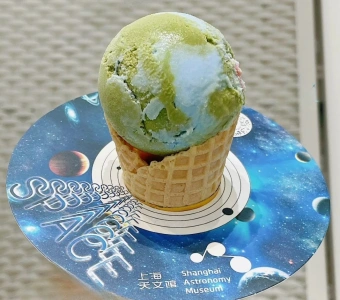
Recommended Hotels Near the Shanghai Astronomy Museum
The Shanghai Astronomy Museum is located quite far from the city center, and there are no major tourist attractions nearby. Most visitors typically spend half a day at the museum and choose to stay in the city center. I recommend staying near Nanjing West Road or the Jiangsu Road Metro Station, as these areas are easily accessible by metro to the museum. For a more detailed guide, refer to the Shanghai Hotel Area Guide. Below are a few recommended hotels:
CitiGO Hotel Jingan Shanghai
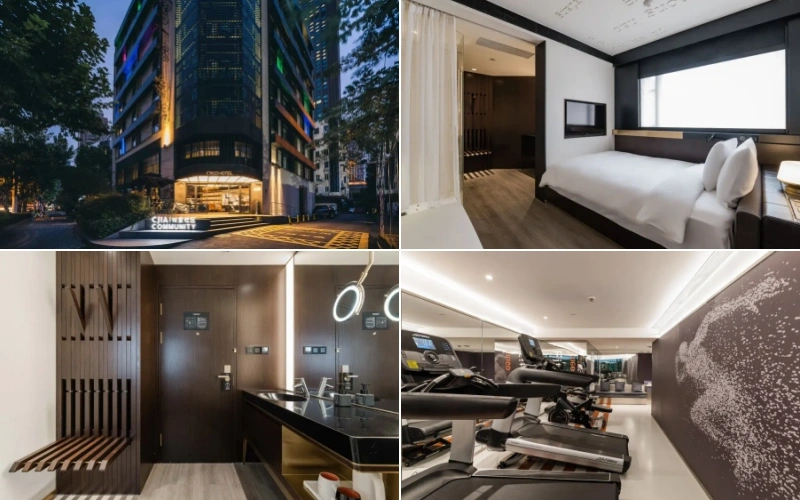
- Location: 12-minute walk from Nanjing West Road Metro Station, 14-minute walk from Shanghai Natural History Museum Metro Station
- Price Range: 422 RMB
- Check Rates: Trip.com Specials, Compare on Klook
- Rating: Trip 4.8
- Special Amenities: Gym, laundry, robot room service
Very convenient, close to Nanjing West Road shopping district, easily accessible to other attractions. Be aware, there is another hotel with the same name nearby; double-check the address when taking a taxi.
Clean and well-equipped. Breakfast offers a wide variety, including fresh vegetables, fruits, delicious mousse, Swiss rolls, and freshly ground coffee. Free night snacks including dumplings available after 10 PM.
Metropolo Dahua Hotel Shanghai
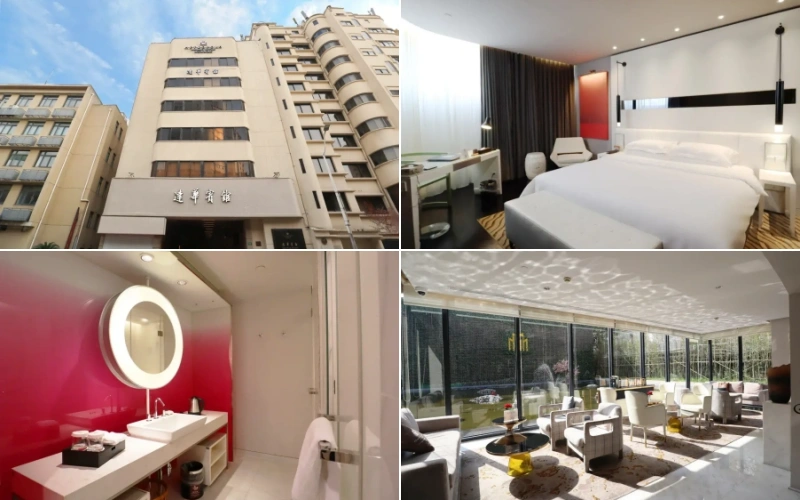
- Location: 12-minute walk from Jiangsu Road Metro Station
- Price Range: 379 RMB
- Check Rates: Trip.com Specials, Compare on Klook
- Rating: Trip 4.6
- Special Amenities: Gym, triple rooms
Near bus route 71 and close to Jiangsu Road Metro Station; convenient for reaching Hongqiao Airport via a short metro ride. Wuyi Road and Yuyuan Road are nearby, perfect for evening walks.
Despite facing the street, rooms are quiet. The hotel occupies a historic building and features a small Utrecht Memorial Hall at the entrance, which is worth a visit for those interested.
Hilton Shanghai Downtown
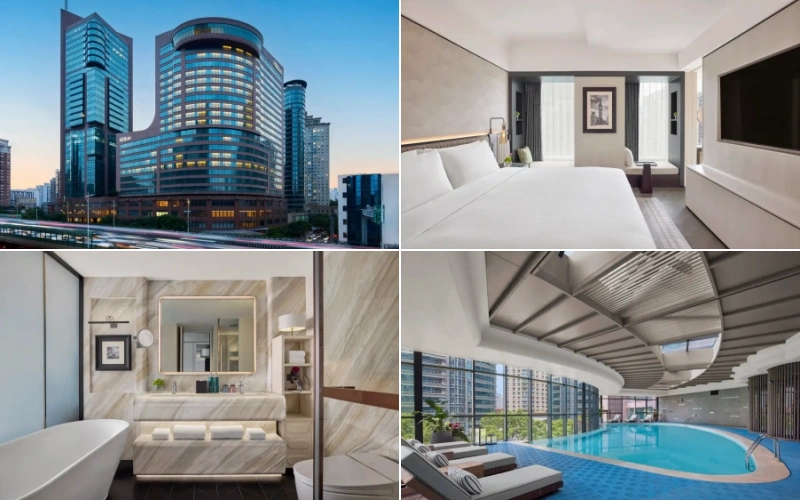
- Location: 12-minute walk from Jiangsu Road Metro Station
- Price Range: 1052 RMB
- Check Rates: Trip.com Specials
- Rating: Trip 4.7
- Special Amenities: Gym, swimming pool
Close to popular shopping districts and attractions, within 15 minutes walking distance from Wukang Road, Anfu Road, and Fuxing Road.
High-quality bedding and facilities, including a Dyson hair dryer, smart toilet, and unlimited capsule coffee. The hotel’s infrastructure is also top-notch, ensuring a luxurious stay.
How to Get from Downtown Shanghai to the Shanghai Astronomy Museum
Since the Shanghai Astronomy Museum is located in the suburbs of Shanghai, it’s quite far from the city center. Taking a taxi can be expensive, so the metro is a better option.
Metro
Take Shanghai Metro Line 16 and get off at Dishui Lake Station. Exit from either Exit 4 or Exit 3, and it’s about a 15-minute walk to the museum. This is the most convenient and economical way to reach the museum.
- Transportation Card Purchase: Trip.com Discounts, Klook Deals, KKday Offers
Bus
You can also choose to take a bus. Here are some suitable bus routes: Medium Capacity Lines 1 and 2, Shengang 1 Line, 1009 Line, 1135 Line, 1043 Line, 1096 Line, Shengang 3 Line.
- Transportation Card Purchase: Trip.com Discounts, Klook Deals, KKday Offers
Taxi/Online Ride-hailing
If you prefer to take a taxi or an online ride-hailing service, the journey from downtown Shanghai to the Shanghai Astronomy Museum takes about 1 hour and 20 minutes and costs around 300 RMB.
FAQ
Yes, the Shanghai Astronomy Museum is very accessible for visitors with strollers and wheelchairs. The museum offers free rental of wheelchairs, strollers, and walking sticks to assist visitors.
The Shanghai Astronomy Museum provides free luggage storage services, even for large luggage. The storage area is inside the museum, and you can access it after your ticket has been checked.
Essential Shanghai Travel Resources
- Comprehensive Shanghai Travel Guide 📖
- Shanghai Travel Recommendations 🏙️
- Hotel Recommendations 🏨
- Transportation Guides ✈️ 🚇 🚄 🚆
- Essential Travel Tips and Tools 🗺️ 🍜 📱 💸 🌤️ 💊🛍️🔌📶🧳

 English (US)
English (US)  English (Hong Kong)
English (Hong Kong)  English (Malaysia)
English (Malaysia)  English (Singapore)
English (Singapore)  繁體中文
繁體中文 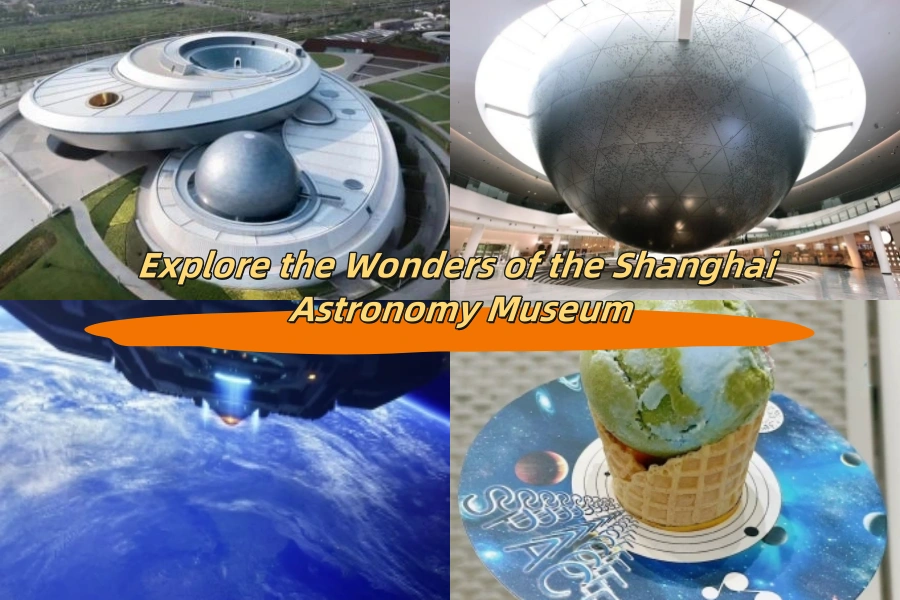
Comment (0)